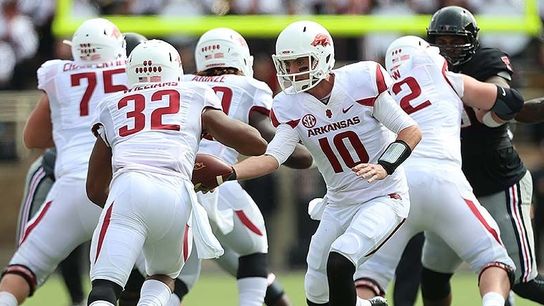Over the past decade or so, the spread no huddle has completely taken over college football, and it has taken a variety of different forms ranging from Baylor's Air Raid that ranked near the top nationally in rushing offense, to Washington State throwing the ball 80 times in a single game, to Ohio State's versatile smash mouth spread attack.
In order to respond to four and five-wide receiver sets, defenses have responded by putting more defensive back and hybrid type players on the field to combat the speedy personnel and tempo of offenses.
As the chess match between offensive and defensive coordinators continues to evolve and coordinators try to find ways to take advantage of defensive personnel, a (somewhat) new offensive innovation is becoming more and more prevalent among college football programs - the pro-style no huddle.
Since many defensive coordinators have responded to the spread no huddle by using faster, smaller players, offensive coordinators are now responding by using both tempo and more running backs and tight end personnel groupings. USC and Clay Helton are one program leaning on this new approach, calling their offense the "smash and gun".
USA Today highlighted the emergence of the pro-style no huddle with a number of coaches, including Jim Mora, Clay Helton, Brian Kelly, and Bret Bielema. In the aticle, Helton explains that marrying the pro-style and the no huddle is the best of both worlds in his eyes.
“Part of the pro-style system is to be able to call two plays and have your quarterback get you in the right one. What I like about the no-huddle is the ability to see the defense and them not know whether you’re going fast or whether you’re just trying to get to the right play. I think you can do both.” The approach also allows Helton to recruit guys who want to play in pro-style systems, as well as use always popular "no huddle card" with recruits.
Coaches that talk to USA Today about the new attack agree that in order to run it all the time you've got to have a number of things including; great size, strength, depth a special quarterback talent and elite conditioning.
Head here to read the full article, including takes from David Shaw and Bret Bielema on why they still prefer the old school ball control approach.
